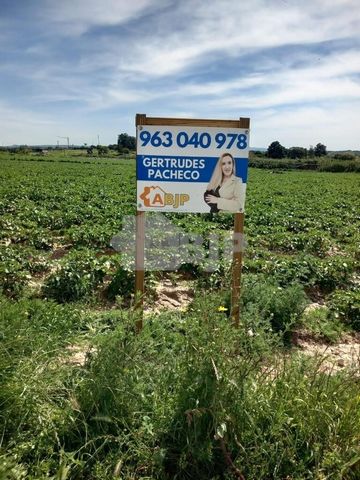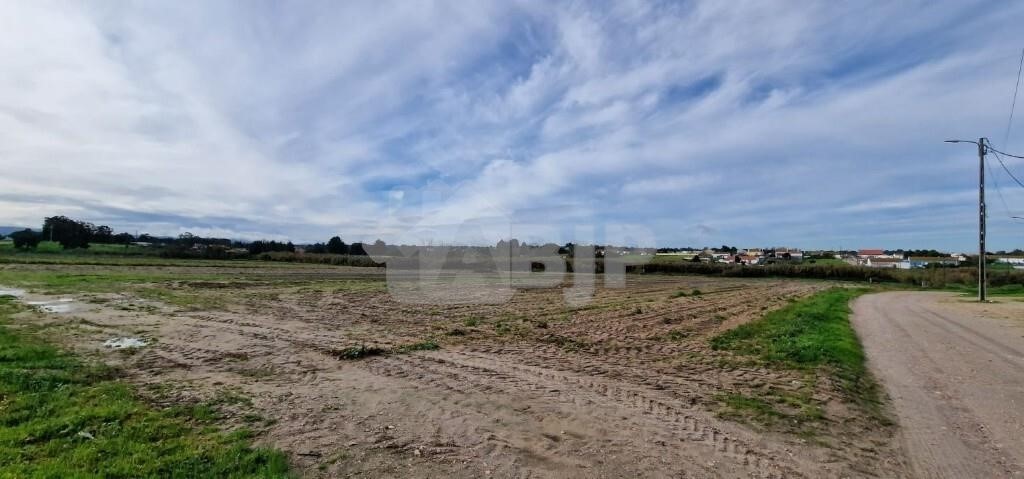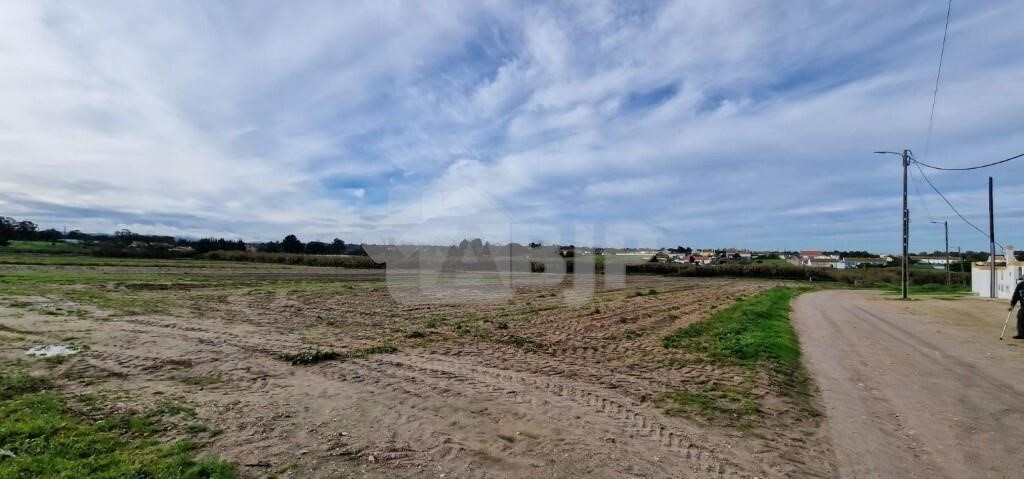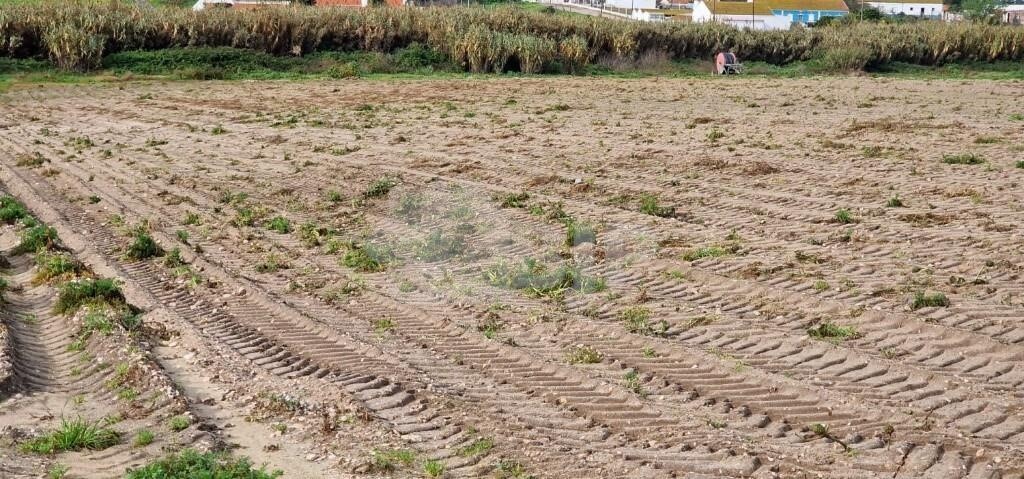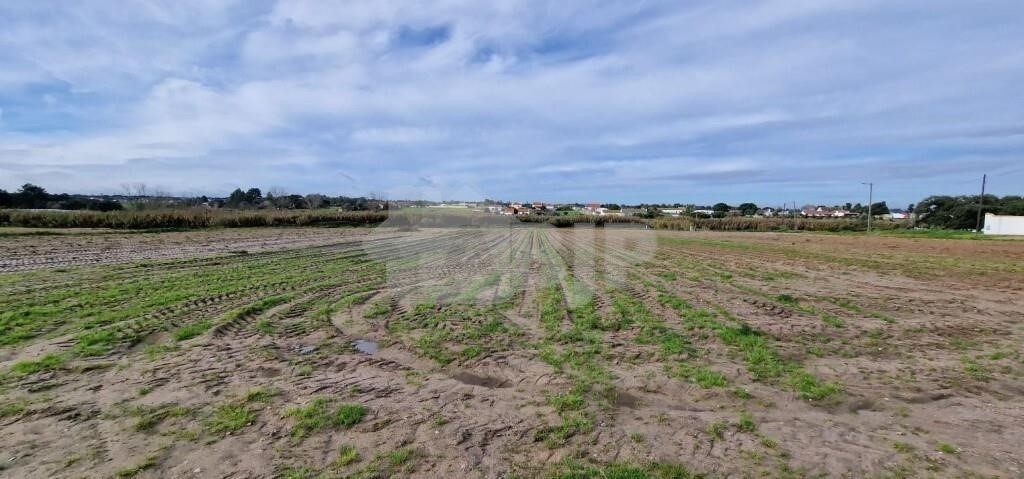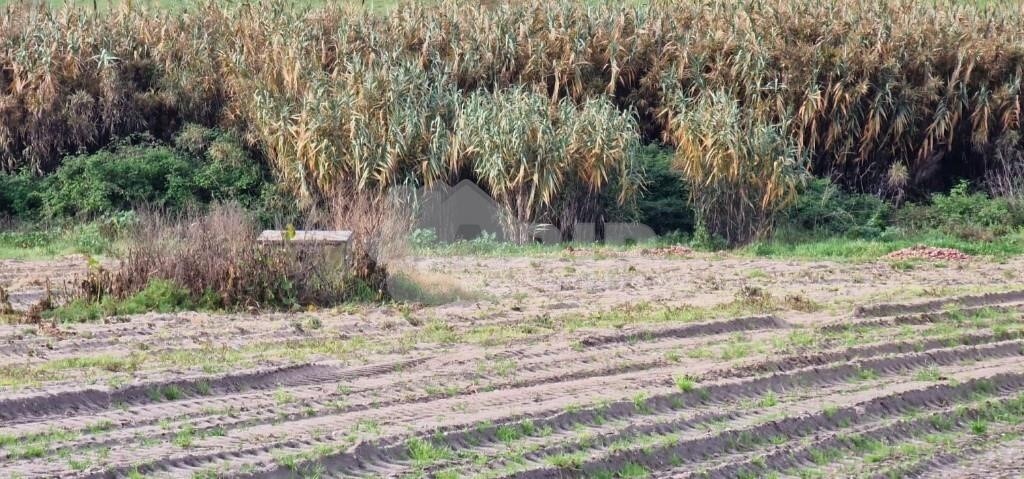FOTO'S WORDEN LADEN ...
Grond (Te koop)
24.850 m²
Referentie:
EDEN-T96531158
/ 96531158
Terrainwith construction feasibilityTotal land area 24 850m2. It has a water and light hole;It is well located, easy access to highways.Until the mid-nineteenth century, the Pinhal Novo region was a place of passage with three major roads, two directed to Spain and another in a South-North direction that united, by land, the Tagus and Sado rivers.Some dispersed settlement characterized the landscape of the "Other Side", and until the beginning of the twentieth century, it was structured based on different types of exploitation units, such as fences, farms and couples, of which the farms stood out, both for the quantity and the diversity of typologies.The history of the formation of the parish may begin in 1833, when the Círio da Carregueira would be founded, which is, most likely, the oldest manifestation of organization in Pinhal Novo.In 1856, the works of the railway began and, in the following year, the Círio dos Olhos de Água began.The official inauguration of the railway lines, from Barreiro to Vendas Novas and Pinhal Novo to Setúbal, takes place on February 1, 1861.The name Pinhal Novo must date from this time, the place was previously called Lagoa da Palha. The first written reference to the name Pinhal Novo is from March 27, 1959, in an article published in the newspaper "O Cisne do Sado".The first truly important public act for the life of the locality takes place on July 18, 1872, it is the donation made by José Maria dos Santos, to the population of Pinhal Novo of a land for the construction of a chapel and for the realization of the festivities. The donation was signed by the residents, by António Domingos Macau and José Nogueira de Faria.The construction work of the church had begun on the eve of the signing of the donation document and was completed in 1874, with the first mass being celebrated on February 2 of the same year.Meanwhile, the village of Pinhal Novo was evolving. A sign of this evolution was the foundation of the Sociedade Filarmónica União Agrícola in 1896 and, in 1910, the creation of the União Futebol Clube Pinhalnovense.A fundamental document for the history of the evolution of the settlement of the region is, even today, the communication presented by the eminent geographer Orlando Ribeiro "The transformations of habitat and cultures in the region of Pinhal Novo (Portugal)", to the XVI International Congress of Geography of Lisbon, republished by the Parish Council, in 1998, in the collection "Origins and Destinations".The first primary school in Pinhal Novo was inaugurated in 1950 at the same time as the National Republican Guard post and the Agricultural Market, the "Praça". The Volunteer Firefighters of Pinhal Novo were created in 1951.Throughout the evolution of Pinhal Novo, the railway has been the backbone of the parish because, just as it divides the village in half, it also unites its past and its future.It should be noted that the population, initially scarce, has been increasing. The "caramels" from Beira Litoral and the Mondego Valley, the "mice" from Beira and others from the Alentejo. But the great demographic surge took place between 1970 and 1975, due to the settlement of the population coming from the Alentejo and the Algarve.After the 25th of April 1974, with the subsequent consolidation of local power, Pinhal Novo experienced important improvements that effectively contributed to the improvement of the living conditions of the population of Pinhalnovense.Pinhal Novo was elevated to the category of Village on March 11, 1988.Currently and since 2010 it has been the preferred choice of those who want to live in an urban area and close to the countryside and nature.with easy access to public transport, and highways, close to large shopping areas and just a few minutes from Lisbon!Book your visit nowand come and discover this magnificent land!
Meer bekijken
Minder bekijken
Terrenocon fattibilità costruttivaSuperficie totale del terreno 24 850m2. Ha un foro per l'acqua e la luce;È ben posizionato, facile accesso alle autostrade.Fino alla metà del XIX secolo, la regione di Pinhal Novo era un luogo di passaggio con tre strade principali, due dirette verso la Spagna e un'altra in direzione Sud-Nord che univano, via terra, i fiumi Tago e Sado.Alcuni insediamenti dispersi caratterizzavano il paesaggio dell'"Altro Lato", e fino all'inizio del Novecento, era strutturato in base a diverse tipologie di unità di sfruttamento, come recinzioni, cascine e coppie, di cui le cascine si distinguevano, sia per la quantità che per la diversità delle tipologie.La storia della formazione della parrocchia potrebbe iniziare nel 1833, quando fu fondato il Círio da Carrigueira, che è, molto probabilmente, la più antica manifestazione di organizzazione a Pinhal Novo.Nel 1856 iniziarono i lavori della ferrovia e, l'anno successivo, iniziò il Círio dos Olhos de Água.L'inaugurazione ufficiale delle linee ferroviarie, da Barreiro a Vendas Novas e da Pinhal Novo a Setúbal, avviene il 1º febbraio 1861.Il nome Pinhal Novo deve risalire a questo periodo, il luogo era precedentemente chiamato Lagoa da Palha. Il primo riferimento scritto al nome Pinhal Novo risale al 27 marzo 1959, in un articolo pubblicato sul giornale "O Cisne do Sado".Il primo atto pubblico veramente importante per la vita della località avviene il 18 luglio 1872, si tratta della donazione fatta da José Maria dos Santos, alla popolazione di Pinhal Novo di un terreno per la costruzione di una cappella e per la realizzazione dei festeggiamenti. La donazione è stata firmata dai residenti, da António Domingos Macau e José Nogueira de Faria.I lavori di costruzione della chiesa erano iniziati alla vigilia della firma del documento di donazione e si conclusero nel 1874, con la prima messa celebrata il 2 febbraio dello stesso anno.Nel frattempo, il villaggio di Pinhal Novo si stava evolvendo. Un segno di questa evoluzione fu la fondazione della Sociedade Filarmónica União Agrícola nel 1896 e, nel 1910, la creazione dell'União Futebol Clube Pinhalnovense.Un documento fondamentale per la storia dell'evoluzione dell'insediamento della regione è, ancora oggi, la comunicazione presentata dall'eminente geografo Orlando Ribeiro "Le trasformazioni di habitat e culture nella regione di Pinhal Novo (Portogallo)", al XVI Congresso Internazionale di Geografia di Lisbona, ripubblicata dal Consiglio Parrocchiale, nel 1998, nella raccolta "Origini e destinazioni".La prima scuola elementare di Pinhal Novo fu inaugurata nel 1950 contemporaneamente al posto della Guardia Nazionale Repubblicana e al Mercato Agricolo, la "Praça". I Vigili del Fuoco Volontari di Pinhal Novo sono stati creati nel 1951.Durante tutta l'evoluzione di Pinhal Novo, la ferrovia è stata la spina dorsale della parrocchia perché, così come divide il villaggio a metà, unisce anche il suo passato e il suo futuro.Va notato che la popolazione, inizialmente scarsa, è in aumento. I "caramelli" di Beira Litoral e della Valle del Mondego, i "topi" di Beira e altri dell'Alentejo. Ma la grande impennata demografica si è verificata tra il 1970 e il 1975, a causa dell'insediamento della popolazione proveniente dall'Alentejo e dall'Algarve.Dopo il 25 aprile 1974, con il successivo consolidamento del potere locale, Pinhal Novo conobbe importanti miglioramenti che contribuirono efficacemente al miglioramento delle condizioni di vita della popolazione di Pinhalnovense.Pinhal Novo è stato elevato alla categoria di Villaggio l'11 marzo 1988.Attualmente e dal 2010 è la scelta preferita di chi vuole vivere in un'area urbana e vicina alla campagna e alla natura.con facile accesso ai trasporti pubblici e alle autostrade, vicino a grandi aree commerciali e a pochi minuti da Lisbona!Prenota ora la tua visitae vieni a scoprire questa magnifica terra!
Terrenocom viabilidade de construçãoÁrea total do terreno 24 850m2. Possui furo de água e luz;Está bem localizado, fácil acesso a autoestradas.Até aos meados do século XIX a região de Pinhal Novo era um local de passagem com três grandes vias, duas direcionadas a Espanha e outra no sentido Sul-Norte que unia, por via terrestre, os rios Tejo e Sado.Algum povoamento disperso caracterizava a paisagem da “Outra Banda”, e até ao início do século XX, estruturava-se com base em diferentes tipos de unidades de exploração, como as cercas, as quintas e os casais, das quais se destacavam as quintas, quer pela quantidade e quer pela diversidade de tipologias.A história da formação da freguesia poderá iniciar-se no ano de 1833, altura em que estaria fundado o Círio da Carregueira, que constitui, muito provavelmente, a mais antiga manifestação de organização em Pinhal Novo.Em 1856 começam as obras do caminho de ferro e, no ano seguinte, teve o seu início o Círio dos Olhos de Água.A inauguração oficial das linhas do caminho de ferro, de Barreiro a Vendas Novas e Pinhal Novo a Setúbal, ocorre a 1 de fevereiro de 1861.Deve datar desta época o nome Pinhal Novo, o local, anteriormente era designado Lagoa da Palha. A primeira referência escrita ao nome Pinhal Novo é de 27 de março de 1959, numa notícia publicada no jornal “O Cisne do Sado”.O primeiro ato público verdadeiramente importante para a vida da localidade acontece a 18 de julho de 1872, trata-se da doação feita por José Maria dos Santos, à população de Pinhal Novo de um terreno para a construção de uma capela e para a realização dos festejos. A doação foi assinada por parte dos moradores, por António Domingos Macau e José Nogueira de Faria.As obras de construção da igreja haviam sido iniciadas na véspera da assinatura do documento de doação e concluíram-se em 1874, celebrando-se a primeira missa no dia 2 de fevereiro do mesmo ano.Entretanto a povoação de Pinhal Novo ia evoluindo. Sinal dessa evolução foi a fundação da, atualmente assim designada, Sociedade Filarmónica União Agrícola no ano de 1896 e, em 1910, a criação do União Futebol Clube Pinhalnovense.Um documento fundamental para a história da evolução do povoamento da região é, ainda hoje, a comunicação apresentada pelo eminente geógrafo Orlando Ribeiro “As transformações do habitat e das culturas na região de Pinhal Novo (Portugal)”, ao XVI Congresso Internacional de Geografia de Lisboa, reeditado pela Junta de Freguesia, em 1998, na coleção “Origens e Destinos”.A primeira escola primária de Pinhal Novo é inaugurada em 1950 em simultâneo com o posto da Guarda Nacional Republicana e o Mercado Agrícola, a “Praça”. Os Bombeiros Voluntários de Pinhal Novo surgem no ano de 1951.Ao longo da evolução de Pinhal Novo o caminho de ferro foi sendo a espinha dorsal da freguesia pois, assim como divide a povoação ao meio, une também o seu passado e o seu futuro.Refira-se que a população, inicialmente escassa, foi sofrendo acréscimos. Os “caramelos” da Beira Litoral e do Vale do Mondego, os “ratinhos” da Beira e outros vindos do Alentejo. Mas o grande surto demográfico teve lugar entre 1970 e 1975, devida à fixação de população vinda do Alentejo e do Algarve.Após o 25 de abril de 1974, com a subsequente consolidação do poder local, Pinhal Novo conheceu importantes melhoramentos que contribuíram, efetivamente, para a melhoria das condições de vida da população Pinhalnovense.Pinhal Novo foi elevado à categoria de Vila a 11 de março de 1988.Atualmente e desde 2010 tem sido escolha preferencial de quem quer viver numa zona urbana e perto do campo e da natureza.com fácil acesso a transporte públicos, e autoestradas, perto de grandes zonas comerciais e a uns escassos minutos de Lisboa!Marque já a sua Visitae venha conhecer este magnífico terreno!
Terrainwith construction feasibilityTotal land area 24 850m2. It has a water and light hole;It is well located, easy access to highways.Until the mid-nineteenth century, the Pinhal Novo region was a place of passage with three major roads, two directed to Spain and another in a South-North direction that united, by land, the Tagus and Sado rivers.Some dispersed settlement characterized the landscape of the "Other Side", and until the beginning of the twentieth century, it was structured based on different types of exploitation units, such as fences, farms and couples, of which the farms stood out, both for the quantity and the diversity of typologies.The history of the formation of the parish may begin in 1833, when the Círio da Carregueira would be founded, which is, most likely, the oldest manifestation of organization in Pinhal Novo.In 1856, the works of the railway began and, in the following year, the Círio dos Olhos de Água began.The official inauguration of the railway lines, from Barreiro to Vendas Novas and Pinhal Novo to Setúbal, takes place on February 1, 1861.The name Pinhal Novo must date from this time, the place was previously called Lagoa da Palha. The first written reference to the name Pinhal Novo is from March 27, 1959, in an article published in the newspaper "O Cisne do Sado".The first truly important public act for the life of the locality takes place on July 18, 1872, it is the donation made by José Maria dos Santos, to the population of Pinhal Novo of a land for the construction of a chapel and for the realization of the festivities. The donation was signed by the residents, by António Domingos Macau and José Nogueira de Faria.The construction work of the church had begun on the eve of the signing of the donation document and was completed in 1874, with the first mass being celebrated on February 2 of the same year.Meanwhile, the village of Pinhal Novo was evolving. A sign of this evolution was the foundation of the Sociedade Filarmónica União Agrícola in 1896 and, in 1910, the creation of the União Futebol Clube Pinhalnovense.A fundamental document for the history of the evolution of the settlement of the region is, even today, the communication presented by the eminent geographer Orlando Ribeiro "The transformations of habitat and cultures in the region of Pinhal Novo (Portugal)", to the XVI International Congress of Geography of Lisbon, republished by the Parish Council, in 1998, in the collection "Origins and Destinations".The first primary school in Pinhal Novo was inaugurated in 1950 at the same time as the National Republican Guard post and the Agricultural Market, the "Praça". The Volunteer Firefighters of Pinhal Novo were created in 1951.Throughout the evolution of Pinhal Novo, the railway has been the backbone of the parish because, just as it divides the village in half, it also unites its past and its future.It should be noted that the population, initially scarce, has been increasing. The "caramels" from Beira Litoral and the Mondego Valley, the "mice" from Beira and others from the Alentejo. But the great demographic surge took place between 1970 and 1975, due to the settlement of the population coming from the Alentejo and the Algarve.After the 25th of April 1974, with the subsequent consolidation of local power, Pinhal Novo experienced important improvements that effectively contributed to the improvement of the living conditions of the population of Pinhalnovense.Pinhal Novo was elevated to the category of Village on March 11, 1988.Currently and since 2010 it has been the preferred choice of those who want to live in an urban area and close to the countryside and nature.with easy access to public transport, and highways, close to large shopping areas and just a few minutes from Lisbon!Book your visit nowand come and discover this magnificent land!
Terrenocon factibilidad de construcciónSuperficie total del terreno 24 850m2. Tiene un ojo de agua y luz;Está bien ubicado, de fácil acceso a autopistas.Hasta mediados del siglo XIX, la región de Pinhal Novo era un lugar de paso con tres grandes carreteras, dos dirigidas a España y otra en dirección Sur-Norte que unían, por tierra, los ríos Tajo y Sado.Algún asentamiento disperso caracterizó el paisaje del "Otro Lado", y hasta principios del siglo XX, se estructuró a partir de diferentes tipos de unidades de explotación, como cercas, chacras y parejas, de las cuales las fincas se destacaron, tanto por la cantidad como por la diversidad de tipologías.La historia de la formación de la parroquia puede comenzar en 1833, cuando se fundaría el Círio da Carregeira, que es, muy probablemente, la manifestación más antigua de organización en Pinhal Novo.En 1856 se iniciaron las obras del ferrocarril y, al año siguiente, se inició el Círio dos Olhos de Água.La inauguración oficial de las líneas férreas, de Barreiro a Vendas Novas y de Pinhal Novo a Setúbal, tiene lugar el 1 de febrero de 1861.El nombre de Pinhal Novo debe datar de esta época, el lugar se llamaba anteriormente Lagoa da Palha. La primera referencia escrita al nombre Pinhal Novo es del 27 de marzo de 1959, en un artículo publicado en el periódico "O Cisne do Sado".El primer acto público verdaderamente importante para la vida de la localidad tiene lugar el 18 de julio de 1872, se trata de la donación hecha por José Maria dos Santos, a la población de Pinhal Novo de un terreno para la construcción de una capilla y para la realización de las festividades. La donación fue firmada por los residentes, António Domingos Macao y José Nogueira de Faria.Las obras de construcción de la iglesia habían comenzado en vísperas de la firma del documento de donación y se terminaron en 1874, celebrándose la primera misa el 2 de febrero del mismo año.Mientras tanto, el pueblo de Pinhal Novo estaba evolucionando. Un signo de esta evolución fue la fundación de la Sociedade Filarmónica União Agrícola en 1896 y, en 1910, la creación de la União Futebol Clube Pinhalnovense.Un documento fundamental para la historia de la evolución del poblamiento de la región es, aún hoy, la comunicación presentada por el eminente geógrafo Orlando Ribeiro "Las transformaciones del hábitat y de las culturas en la región de Pinhal Novo (Portugal)", al XVI Congreso Internacional de Geografía de Lisboa, reeditada por el Consejo Parroquial, en 1998, en la colección "Orígenes y Destinos".La primera escuela primaria de Pinhal Novo fue inaugurada en 1950, al mismo tiempo que el puesto de la Guardia Nacional Republicana y el Mercado Agrícola, la "Praça". Los Bomberos Voluntarios de Pinhal Novo fueron creados en 1951.A lo largo de la evolución de Pinhal Novo, el ferrocarril ha sido la columna vertebral de la parroquia porque, al igual que divide el pueblo por la mitad, también une su pasado y su futuro.Cabe destacar que la población, inicialmente escasa, ha ido en aumento. Los "caramelos" del Beira Litoral y del Valle del Mondego, los "ratones" de Beira y otros del Alentejo. Pero el gran auge demográfico tuvo lugar entre 1970 y 1975, debido al asentamiento de la población procedente del Alentejo y del Algarve.Después del 25 de abril de 1974, con la posterior consolidación del poder local, Pinhal Novo experimentó importantes mejoras que contribuyeron efectivamente a la mejora de las condiciones de vida de la población pinhalnovense.Pinhal Novo fue elevado a la categoría de Village el 11 de marzo de 1988.Actualmente y desde el año 2010 ha sido la opción preferida de quienes quieren vivir en una zona urbana y cerca del campo y la naturaleza.con fácil acceso al transporte público y a las autopistas, cerca de grandes zonas comerciales y a pocos minutos de Lisboa.Reserva tu visita ahora¡Y ven a descubrir esta magnífica tierra!
Referentie:
EDEN-T96531158
Land:
PT
Stad:
Pinhal Novo
Categorie:
Residentieel
Type vermelding:
Te koop
Type woning:
Grond
Omvang woning:
24.850 m²
GEMIDDELDE WONINGWAARDEN IN PINHAL NOVO
VASTGOEDPRIJS PER M² IN NABIJ GELEGEN STEDEN
| Stad |
Gem. Prijs per m² woning |
Gem. Prijs per m² appartement |
|---|---|---|
| Palmela | EUR 2.736 | EUR 2.302 |
| Moita | EUR 1.963 | EUR 1.703 |
| Montijo | EUR 2.566 | EUR 2.736 |
| Moita | - | EUR 1.921 |
| Setúbal | EUR 3.347 | EUR 2.731 |
| Alcochete | EUR 2.781 | EUR 3.290 |
| Setúbal | EUR 2.986 | EUR 2.786 |
| Alcochete | EUR 2.929 | EUR 3.747 |
| Barreiro | - | EUR 2.116 |
| Quinta do Conde | EUR 2.407 | EUR 1.947 |
| Seixal | EUR 2.887 | EUR 2.584 |
| Almada | EUR 2.976 | EUR 2.745 |
| Sesimbra | EUR 2.760 | EUR 3.991 |
| Lisboa | EUR 6.696 | EUR 6.239 |
| Almada | EUR 3.408 | EUR 2.916 |
| Algés | - | EUR 5.511 |
| Odivelas | EUR 3.058 | EUR 3.387 |
| Loures | EUR 3.057 | EUR 3.339 |
| Alfragide | - | EUR 3.379 |

